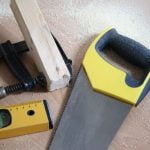Are you considering making improvements to your home, but unsure of how much it will cost? In this article, we will explore the concept of home improvement loans and their importance in financing renovations and upgrades for homes. Whether you’re looking to remodel your kitchen, add a new bathroom, or make energy-efficient upgrades, understanding how much a home improvement loan can provide is essential in planning and budgeting for your project.
When it comes to financing home improvement projects, there are several options available. From personal loans to home equity loans and lines of credit, each type of loan has its own set of features and requirements. Understanding the different types of home improvement loans and how they can impact your renovation plans is crucial in making informed financial decisions.
Factors such as credit score, income, and home equity can also play a significant role in determining the amount you can borrow for a home improvement loan. By exploring these various factors in detail, you’ll be better equipped to assess your own financial situation and determine the appropriate amount to fund your project. Stay tuned as we delve deeper into these aspects throughout this article.
Types of Home Improvement Loans
When considering a home improvement project, one of the first steps is to determine the best way to finance it. There are several types of home improvement loans available, each with its own set of advantages and considerations. Understanding the different options can help homeowners make an informed decision when it comes to financing their renovation or upgrade.
Personal Loans
Personal loans are a popular choice for financing home improvement projects because they are unsecured, meaning they don’t require any collateral. This makes them a great option for homeowners who may not have significant equity in their homes. Personal loans also offer fixed interest rates and terms, making it easier to budget for the monthly payments. However, the loan amount you can qualify for may be limited by your credit score and income.
Home Equity Loans
Home equity loans allow homeowners to borrow against the equity in their homes, providing a lump sum that can be used for renovations or upgrades. These loans typically have fixed interest rates and longer repayment terms than personal loans, making them a good option for larger projects.
The amount you can borrow is based on the equity you have in your home, which is determined by the difference between your home’s market value and what you owe on your mortgage.
Home Equity Lines of Credit (HELOC)
A HELOC is a line of credit that allows homeowners to borrow against the equity in their home as needed, similar to a credit card. This provides flexibility in accessing funds for ongoing or long-term projects. HELOCs often have variable interest rates and typically have an initial draw period followed by a repayment period. The amount you can borrow with a HELOC depends on your available equity and your creditworthiness.
Understanding the different types of home improvement loans can help homeowners choose the best option for financing their renovation or upgrade project. By considering factors such as loan amounts, interest rates, repayment terms, and eligibility requirements, homeowners can make an informed decision that aligns with their financial goals and needs.
Factors Affecting Loan Amount
When considering how much is a home improvement loan, it’s important to understand the various factors that can impact the amount you can borrow for your renovation project. One of the most significant factors is your credit score.
Lenders typically use this to assess your creditworthiness and determine the risk of lending to you. A higher credit score will make you more likely to qualify for a larger loan amount, as it shows that you have a history of responsible borrowing and are more likely to repay the loan.
Another factor that can affect the amount you can borrow for a home improvement loan is your income. Lenders will evaluate your income to ensure that you have sufficient funds to repay the loan. A higher income may qualify you for a larger loan amount, as it demonstrates that you have the financial means to cover the monthly payments.
In addition to credit score and income, home equity is also an important consideration when determining how much you can borrow for a home improvement loan. Home equity refers to the value of your home minus any outstanding mortgage balance. The higher your home equity, the more you may be able to borrow, as it serves as collateral for the loan.
Overall, when evaluating how much is a home improvement loan, it’s crucial to consider these factors in order to determine the maximum loan amount available based on your financial situation and creditworthiness. By understanding these factors and working towards improving them, individuals can increase their chances of securing a larger loan amount for their renovation projects.
Average Loan Amounts
When considering a home improvement project, one of the key questions that may come to mind is: how much is a home improvement loan? The answer to this question can vary depending on several factors, including the type of loan you choose, your credit history, and the amount of equity you have in your home.
According to data from financial institutions and lending organizations, the average loan amount for home improvement projects in the United States ranges from $5,000 to $50,000. This wide range allows homeowners to fund anything from small updates to major renovations.
One of the most popular options for financing home improvements is a home equity loan. This type of loan allows homeowners to borrow against the equity they have built up in their property. According to recent research, the average amount borrowed through a home equity loan for renovation purposes falls between $25,000 and $50,000. This makes it an ideal choice for larger-scale projects such as kitchen remodels or room additions.
For smaller or medium-sized projects, personal loans are another common choice. These loans typically range from $5,000 to $35,000 and are unsecured, meaning they do not require collateral such as home equity. As a result, interest rates may be higher compared to secured loans like home equity loans or lines of credit.
It’s important to note that these figures are averages and individual loan amounts can vary widely based on specific project needs and personal financial situations. When planning for a home improvement project and considering borrowing options, consulting with a financial advisor or mortgage lender can provide valuable insight into how much you can borrow based on your circumstances.
| Loan Type | Average Loan Amount Range |
|---|---|
| Home Equity Loan | $25,000 – $50,000 |
| Personal Loan | $5,000 – $35,000 |
Interest Rates and Fees
When considering a home improvement loan, it is important to understand the various interest rates and fees associated with these types of loans. The interest rate on a home improvement loan can vary depending on the lender, the type of loan, and your credit history.
Typically, interest rates for home improvement loans range from 5% to 36%, with the average falling around 10-12%. It’s important to shop around and compare rates from different lenders to ensure you are getting the best possible deal.
In addition to interest rates, borrowers should also be aware of any fees associated with obtaining a home improvement loan. These fees can include origination fees, application fees, appraisal fees, and closing costs. It’s essential to factor in these additional costs when determining the overall cost of your loan. Some lenders may offer no-fee or low-fee options, so it’s crucial to do your research and carefully review all potential charges before committing to a specific loan.
Understanding how interest rates and fees can impact the overall cost of a home improvement loan is critical for budgeting and planning purposes. Even a small difference in interest rates and fees can significantly affect the total amount you will repay over the life of the loan. By carefully comparing offers from different lenders and being mindful of all potential charges, borrowers can ensure they are getting the best deal possible for their home improvement financing needs.
Applying for a Home Improvement Loan
When it comes to applying for a home improvement loan, there are several steps you need to follow and a variety of documents and information that you will need to provide. The first step in the process is to determine which type of home improvement loan is best suited for your needs.
As mentioned earlier, there are different options available, including personal loans, home equity loans, and home equity lines of credit (HELOC). Each of these options has its own requirements and application process.
Once you have decided on the type of loan you want to pursue, the next step is to gather all the necessary documentation. Most lenders will require proof of income, tax returns, employment verification, and a list of your assets and debts. If you are applying for a home equity loan or HELOC, you will also need to provide documentation related to your home’s value and any existing mortgage.
In addition to the required documents, you will also need to provide information about the specific home improvement project you intend to undertake. This may include cost estimates from contractors, renovation plans, and details about the scope of work. Being prepared with all this information can help streamline the application process and improve your chances of securing a favorable loan with competitive terms.
Lastly, it’s essential to be aware that each lender may have slightly different requirements, so it’s recommended to reach out directly to potential lenders or consult their websites for specific guidelines on how to apply for a home improvement loan.
| Documentation | Information |
|---|---|
| Proof of income | Cost estimates from contractors |
| Tax returns | Renovation plans |
| Employment verification | Details about the scope fo work |
Tips for Getting the Best Loan
When looking for a home improvement loan, it’s essential to secure the best possible terms to ensure that the overall cost of your project remains manageable. Here are some tips on how to make sure you’re getting the best loan for your needs:
- Improve Your Credit Score: One of the key factors in securing a favorable home improvement loan is your credit score. Lenders use this to determine your creditworthiness and the interest rate you’ll be offered. Make sure to check your credit report for any errors and work on improving your score by paying down existing debt and making timely payments.
- Compare Lenders: It’s crucial to shop around and compare offers from different lenders before committing to a home improvement loan. Different lenders may offer varying interest rates, terms, and fees, so taking the time to research and obtain multiple quotes can help you find the most favorable option.
- Consider Government Programs: Some government programs, such as FHA Title I loans or energy-efficient mortgages, offer specialized home improvement financing with favorable terms. These programs are designed to assist homeowners with specific types of renovations and may offer more affordable lending options.
By improving your credit score, comparing lenders, and exploring government programs, you can increase your chances of securing the best home improvement loan for your needs. Taking these steps will not only help you access more favorable terms but also ensure that you can fund your renovation project in a financially sustainable way.
Case Studies
In conclusion, when it comes to financing home improvement projects, the availability of loan options and the amount that can be borrowed can vary greatly. Factors such as credit score, income, and home equity play a significant role in determining how much one may be eligible to borrow. Additionally, different types of loans, such as personal loans and home equity lines of credit, offer distinct advantages and disadvantages in terms of interest rates and fees.
According to recent research, the average loan amount for home improvement projects falls within a certain range. However, it is important to note that individual circumstances may differ based on the specific renovation needs and financial situations of homeowners. This is why comparing lenders and improving one’s credit score are crucial steps in securing the best possible loan for a home improvement project.
Real-life case studies provide valuable insight into how individuals have utilized home improvement loans to fund their renovation projects. These examples showcase the diversity in both loan amounts and outcomes, demonstrating that there is no one-size-fits-all approach when it comes to financing home improvements. Ultimately, understanding how much can be borrowed for a home improvement loan requires careful consideration of various factors and diligent research in order to make informed financial decisions.
Frequently Asked Questions
What Is the Typical Term for a Home Improvement Loan?
The typical term for a home improvement loan can vary depending on the lender and the specific type of loan. However, most home improvement loans have terms ranging from 2 to 12 years, with some options for longer or shorter terms.
What Is the Minimum Credit Score for a Home Improvement Loan?
The minimum credit score required for a home improvement loan also depends on the lender and the type of loan. Generally, a credit score of 620 or higher is considered good enough to qualify for most home improvement loans, but some lenders may require a higher score.
Why Are Home Improvement Loans So Expensive?
Home improvement loans can be more expensive than other types of loans due to several factors. These may include higher interest rates, additional fees such as origination fees or closing costs, and the fact that unsecured home improvement loans carry more risk for lenders than loans backed by collateral like a house or car.
Additionally, lenders typically factor in the potential cost overruns associated with renovations when determining loan terms and rates.

I’m thrilled to have you here as a part of the Remodeling Top community. This is where my journey as an architect and remodeling enthusiast intersects with your passion for transforming houses into dream homes.





